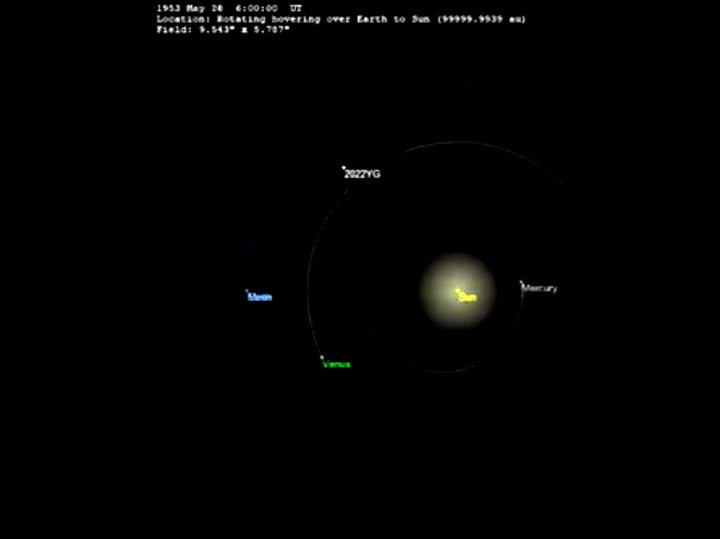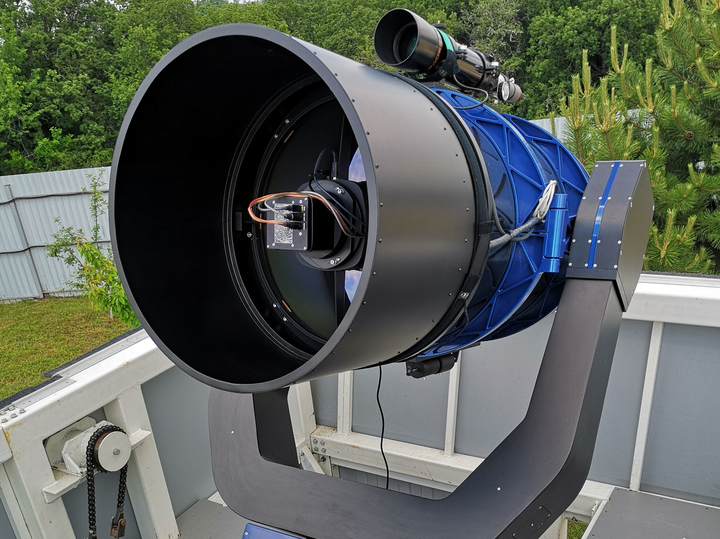Astronomer Borisov told how he discovered a record-breaking asteroid approaching the Earth
[ad_1]
I met Gennady Vladimirovich four years ago, when the information about the interstellar comet 2I/Borisov, discovered by him, spread around the world. By that time, among his achievements were two home-made telescopes – with a lens diameter of 30 m and 65 cm, seven comets discovered on them (today there are already 11 of them) and several asteroids. The discovery of the 2019 comet was included in the Guinness Book of Records as an outstanding event (the second interstellar comet that flew into the solar system), made, however, by an amateur astronomer on a telescope assembled by himself. In this, Gennady Vladimirovich surpassed the astronomer Clyde Tombaugh, an amateur who discovered Pluto, but on the astrograph of the Lowell Observatory.
Help “MK”. Gennady Borisov, a graduate of the Faculty of Physics of Moscow State University, works in the Crimean branch of the Astronomical Research Center and concurrently as an engineer at the Sternberg State Astronomical Institute of Lomonosov Moscow State University. In his free time, he makes his own telescopes, through which he observes and searches for comets and asteroids. In 2014, he was twice awarded the Edgar Wilson Prize, an international astronomy prize given annually to comet discoverers.
So, on January 21, the name of Borisov again thundered to the whole world. The asteroid 2023 BU he found is marked on the NASA Jet Propulsion Laboratory (JPL) website as the most interesting upcoming astronomical event.
— Gennady Vladimirovich, how did you manage to discover such a small asteroid that will fly ten times closer to the Earth compared to geostationary satellites?
“Two months ago, I changed my observation technique in order to observe near-Earth asteroids with my new, third in a row, 50-cm telescope. This new technique, unfortunately, excludes the observation of comets, but in two months I managed to observe 14 near-Earth asteroids, two of which were discovered by me for the first time. The first – in December, it turned out to be a quasi-satellite of the Earth, and the second – the one about which there was more information – the 3-8-meter 2023 BU.

— First, tell us about the new quasi-satellite.
– This is 2023YG, which has replenished the collection of six already known quasi-satellites of our planet. It, like the Moon, is attracted by the Earth, but rotates at a distance farther from it, about 30 million kilometers (the Moon is at a distance of about 400 thousand km. – Auth.).
Help “MK”. Unlike a real satellite, the orbit of a quasi-satellite is outside the so-called Hill Sphere – the space around the planet in which it is able to keep its satellite, despite the attraction of the Sun. Therefore, the orbit of a quasi-satellite is always less unstable.
– Now tell us about the asteroid that we are waiting for on January 26th.
– It is interesting because its discovery took place five days before the closest approach to the Earth. One of the most important tasks of large survey projects is to detect just such very small, “blind” asteroids.
— How often do such asteroids are discovered in the world?
– The minimum distances at which they fly are different. Quite often, asteroids are discovered that fly at a distance of half the distance to the Moon, or 1/5 of its part. And here it turned out that I discovered an astroid that will fly from us almost 100 times closer than the moon. These open one every few years.
Who else in the world can boast of such discoveries?
– The ATLAS project in Hawaii has two half-meter telescopes, and near-Earth asteroids are also monitored using a telescope in Arizona.
— So you compete with such large observatories? Do you have some unique technology for detecting celestial bodies?
“First, there must be a very high-quality telescope. It is desirable, of course, that it be with a large field of view. But now I am observing with a half-meter telescope of my own making, and, oddly enough, it gives a very high-quality image. For example, in Hawaii there is also a fast telescope, and its aperture ratio (F1 / 2) will be larger than mine (F1 / 9). This is explained by the fact that they have a very large matrix (digital receiver. – Auth.), I cannot afford this, it is very expensive.

So you don’t do everything by hand?
– In my telescope, by and large, only a matrix, a carbon pipe and a mount were bought – a mechanical part with motors. Everything else is yours. Lenses are made according to my drawings, then we grind them and send them for application of antireflection and reflective coatings to a factory in Lytkarino near Moscow.
Are the drawings patented?
– There are no big secrets here, the main thing is that everything is done with the highest quality and people who are really interested in it are engaged in the work. I have many such assistants. Firstly, my son, a physicist by profession, helps me, there are many guys who are programmers, communications workers, and computer scientists. If you come to our General Staff (so, by the first part of my name, we call my trailer, where I have computers connected to telescopes), you can see that work is often in full swing around them – we grind a lot on milling and turning machines We also have a 3D printer.
The telescopes I developed have no analogues in the world. They are distinguished by high luminosity, high image quality. Only in this way can we catch a very weak, small object in the sky, which, in addition to everything else, is moving.
“However, Western telescopes have even greater luminosity. How do you manage to discover something before them?
– The sky is big. Some may have money, but no mood, no luck (smiles). In addition, the favorable location of Russia helps me – here the night comes earlier than the Americans. Therefore, my colleagues and I usually try not to sleep at night, otherwise, if we miss some interesting object, astronomers in the States will discover it later. Imagine a blind, weak little man who first came to the forest and is looking for mushrooms, poking at them with a stick. At the same time, he knows that in a few hours a thousand such amateurs will run into his place and will study every square centimeter in search of the same mushrooms under a microscope.
– Are your astroids already listed in the international database?
Both are listed by the Minor Planet Center.
– Muscovites will be able to see the one that will fly very low over us?
– No, it will be visible only in the Southern Hemisphere, where many observatories are already preparing to shoot it in order to clarify the distance to it, to see its further orbit. At this time, the morning of January 27 will come to us.
– How many near-Earth asteroids have been discovered by our astronomers?
– Since the 20s of the last century – about 50. Such a number, even more, is opened in the West within one month. For example, 90 near-Earth asteroids were discovered this month.
– And yours is the only one among them – Russian?
– Yes.
[ad_2]
Source link








